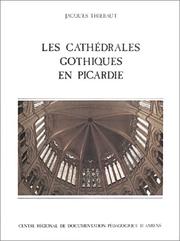| Listing 1 - 10 of 151 | << page >> |
Sort by
|
Book
Year: 1922 Publisher: Schaerbeek: [éditeur inconnu],
Abstract | Keywords | Export | Availability | Bookmark
 Loading...
Loading...Choose an application
- Reference Manager
- EndNote
- RefWorks (Direct export to RefWorks)
Book
Year: 1923 Publisher: Schaerbeek: [éditeur inconnu],
Abstract | Keywords | Export | Availability | Bookmark
 Loading...
Loading...Choose an application
- Reference Manager
- EndNote
- RefWorks (Direct export to RefWorks)
Book
Abstract | Keywords | Export | Availability | Bookmark
 Loading...
Loading...Choose an application
- Reference Manager
- EndNote
- RefWorks (Direct export to RefWorks)
Image
Year: 1801 Publisher: S.l. : s.n.,
Abstract | Keywords | Export | Availability | Bookmark
 Loading...
Loading...Choose an application
- Reference Manager
- EndNote
- RefWorks (Direct export to RefWorks)
Architecture, Details. --- Architecture. --- Facades. --- Gothic architecture.
Book
ISBN: 1139343882 1108051766 Year: 2013 Publisher: Cambridge : Cambridge University Press,
Abstract | Keywords | Export | Availability | Bookmark
 Loading...
Loading...Choose an application
- Reference Manager
- EndNote
- RefWorks (Direct export to RefWorks)
A tutor of mathematics at Cambridge, William Whewell (1794-1866) mostly published on mechanics. He became professor of mineralogy in 1828, Knightbridge professor of moral philosophy in 1838, and master of Trinity College in 1841. This work is unusual among his writings for its focus on architecture, yet the emphasis placed on terminology is consistent with his other publications, such as An Essay on Mineralogical Classification and Nomenclature (1828). Architectural Notes is significant for offering a detailed theoretical analysis of the origins of Gothic architecture, especially of the mechanical principles underlying it, notably the pointed arch. The discussion of German churches, despite the book's title, is of secondary concern, although guidance is given for recording Gothic buildings. This first edition was published anonymously in 1830. The second (1835) and third (1842) editions bore Whewell's name and were partially revised to reflect recent research on the origin of the pointed arch.
Church architecture --- Architecture, Gothic --- Gothic architecture --- Christian antiquities
Book
Year: 1965 Publisher: Paris : Hachette,
Abstract | Keywords | Export | Availability | Bookmark
 Loading...
Loading...Choose an application
- Reference Manager
- EndNote
- RefWorks (Direct export to RefWorks)
Architecture gothique --- Architecture de la renaissance --- Gothic architecture --- Gothique --- Manierisme
Book
ISBN: 377744040X Year: 1986 Publisher: München Hirmer
Abstract | Keywords | Export | Availability | Bookmark
 Loading...
Loading...Choose an application
- Reference Manager
- EndNote
- RefWorks (Direct export to RefWorks)
-Cathedrals --- -Gothic architecture --- Architecture, Gothic --- Cathedrals --- Christian art and symbolism --- Cathédrales --- Architecture gothique
Book
ISBN: 1107109949 1108068502 Year: 1841 Publisher: Place of publication not identified : Cambridge : publisher not identified, Cambridge University Press
Abstract | Keywords | Export | Availability | Bookmark
 Loading...
Loading...Choose an application
- Reference Manager
- EndNote
- RefWorks (Direct export to RefWorks)
Among the most influential figures of the Gothic Revival in nineteenth-century Britain, Augustus Welby Northmore Pugin (1812-52) distinguished himself as an architect, author and interior designer. His illustrated lectures on ecclesiastical design were first published in 1841 and are reissued here with An Apology for the Revival of Christian Architecture in England (1843). Reflecting the influence of the author's conversion to Catholicism, the works discuss a range of architectural features, their functions and where they should be implemented. Pugin also outlines, with some amusement, the dangers of executing designs that do not follow his principles. The highly detailed illustrations are drawn with an architect's precision, showing both realised and unrealised designs. Contrasts (revised second edition, 1841), Pugin's most famous work, is also reissued in this series. Together, these publications remain essential reading for those seeking to understand the growth of the Gothic Revival.
Architecture, Gothic. --- Christian art and symbolism --- Gothic architecture --- Christian antiquities --- Church architecture

ISBN: 2866150015 9782866150013 Year: 1987 Publisher: Amiens: CRDP,
Abstract | Keywords | Export | Availability | Bookmark
 Loading...
Loading...Choose an application
- Reference Manager
- EndNote
- RefWorks (Direct export to RefWorks)
726.6 --- Cathedrals --- -Architecture, Gothic --- -Gothic architecture --- Christian antiquities --- Church architecture --- Church buildings --- Dioceses --- 726.6 Kathedralen. Domkerken --- Kathedralen. Domkerken --- -726.6 Kathedralen. Domkerken --- Gothic architecture --- Architecture, Gothic --- Cathédrale --- Histoire de l'architecture --- Amiens --- Laon --- Noyon --- Picardie
Book
ISBN: 8477193746 Year: 1993 Publisher: Léon Universidad de Léon
Abstract | Keywords | Export | Availability | Bookmark
 Loading...
Loading...Choose an application
- Reference Manager
- EndNote
- RefWorks (Direct export to RefWorks)
| Listing 1 - 10 of 151 | << page >> |
Sort by
|

 Search
Search Feedback
Feedback About UniCat
About UniCat  Help
Help News
News